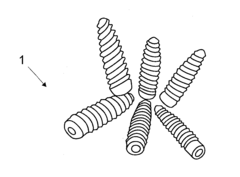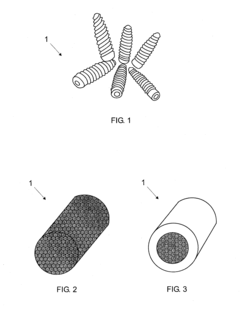Manufacturing process of a porous component and a porous component
- Summary
- Abstract
- Description
- Claims
- Application Information
AI Technical Summary
Benefits of technology
Problems solved by technology
Method used
Image
Examples
Embodiment Construction
[0025]The process for manufacturing the porous material in this invention is the powder injection molding (PIM), which is a variant technique of powder metallurgy, improved in the invention herein to make it possible to obtain a porous structure with the features necessary for the specific desired application; in other words, a porous component for the uniform distribution of gas fluid (flow restrictor) seeking aerostatic bearing.
[0026]One of these applications is found in the aerostatic bearing of compressors, whose bearing is achieved through a gas layer capable of keeping a piston's linear movement in balance inside a cylinder. In order to do this, the amount of gas responsible for bearing the piston needs to be constant and, to control the fluid flow, it is necessary to use a porous component 1 with an homogenous porous structure, which not only allows for regulating the flow but also its uniform distribution in the system to be borne. The development of the porous component 1, ...
PUM
| Property | Measurement | Unit |
|---|---|---|
| Temperature | aaaaa | aaaaa |
| Temperature | aaaaa | aaaaa |
| Temperature | aaaaa | aaaaa |
Abstract
Description
Claims
Application Information
 Login to view more
Login to view more - R&D Engineer
- R&D Manager
- IP Professional
- Industry Leading Data Capabilities
- Powerful AI technology
- Patent DNA Extraction
Browse by: Latest US Patents, China's latest patents, Technical Efficacy Thesaurus, Application Domain, Technology Topic.
© 2024 PatSnap. All rights reserved.Legal|Privacy policy|Modern Slavery Act Transparency Statement|Sitemap


